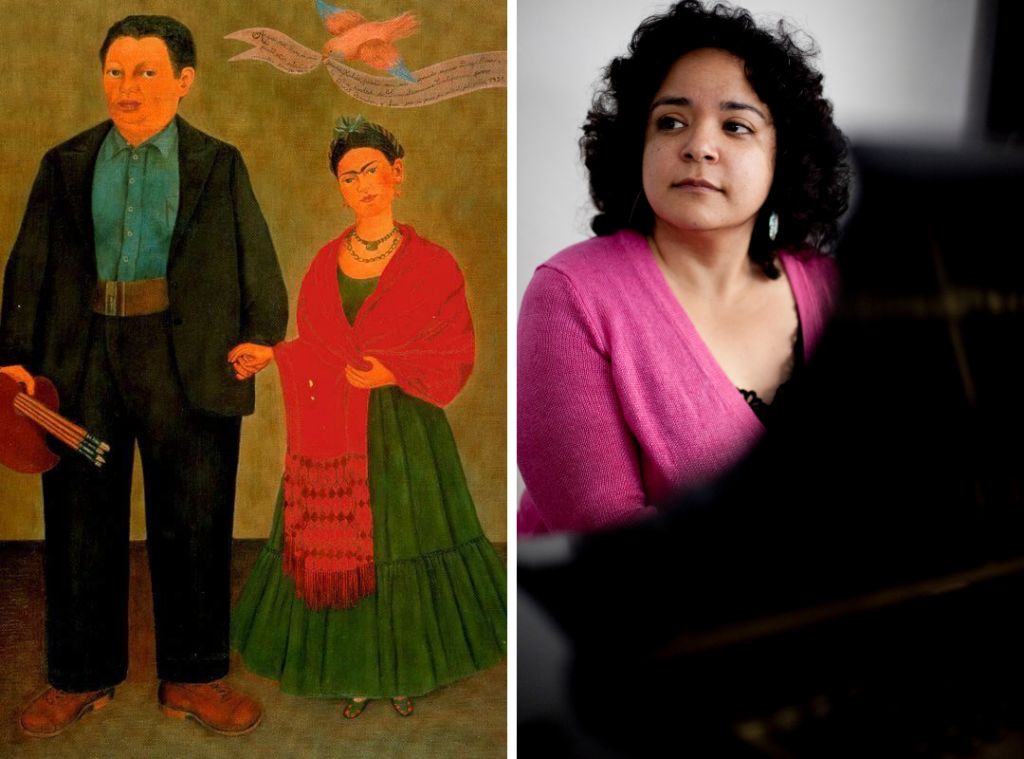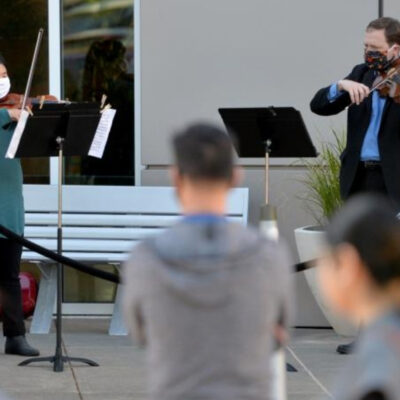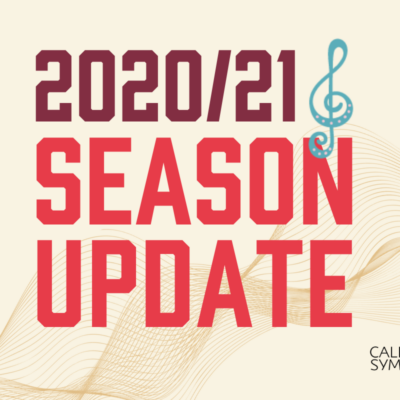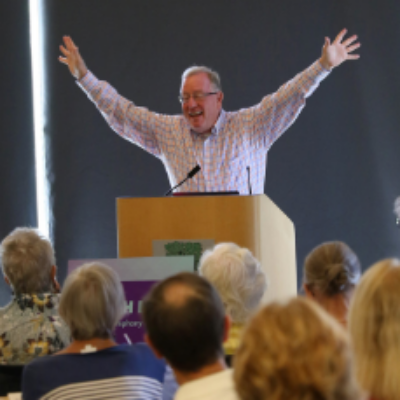
Left: Frida Kahlo’s self-portrait with husband Diego Rivera depicts relationship that is far from straightforward. (Frida Kahlo, Frieda and Diego Rivera, 1931; collection SFMOMA, Albert M. Bender Collection, gift of Albert M. Bender; © Banco de Mexico Diego Rivera & Frida Kahlo Museums Trust, Mexico, D.F. / Artists Rights Society (ARS), New York ; photo: Ben Blackwell.) Right: Composer Gabriela Lena Frank.
Gabriela Lena Franks’ The Keeper and the Dove song cycle uses text by Pulitzer Prize-winning Cuban-American playwright Nilo Cruz to explore the complex relationship between Mexican artists Diego Rivera and Frida Kahlo. The “Keeper” allows Kahlo’s spirit form to return to her beloved husband for one last visit during the Dia de los Muertos (Day of the Dead) festival, but tantalizingly, the two cannot touch.
BAY AREA CONNECTIONS
- Acclaimed composer Gabriela Lena Frank was born in Berkeley and now lives in Booneville near Mendocino, two hours north of San Francisco.
- Artists Frida Kahlo and Diego Rivera, the subjects of the text of her La Centinela y la Paloma (Keeper and the Dove) song cycle, spent time in San Francisco in the 1930s when he was commissioned to paint several giant murals inside city buildings. The murals can still be seen today, and one of Kahlo’s most iconic works—a self-portrait of the couple—is on display at SFMOMA.
- Music Director Donato Cabrera got the idea to program the Keeper and the Dove as a result of meeting singer Rachel Calloway at a Kennedy Center concert curated by former California Symphony Composer-in-Residence Mason Bates.
- This is the second year in a row that music by Frank appears on a California Symphony season opener. Last year, her West Side Story inspired Three Latin American Dances for Orchestra was featured on the Beethoven & Bernstein September concert.
Composer Gabriela Lena Frank is known for embracing elements of cultural identity in her music. Growing up in Berkeley with Lithuanian/Jewish and Peruvian/Chinese parents, Frank was exposed to a lot of traditional South American music, and La Centinela y la Paloma arose from her deep interest in Latin American idioms and traditions. Mexican artist Frida Kahlo is the protagonist, and the backdrop is provided by the Mexican Dia de los Muertos (Day of the Dead) multi-day festival, when friends and family gather to pray for and remember those who have died and to ease their spirit journey.
The origin of the composition dates from a 2004 workshop for a handful of emerging composers at Carnegie Hall, where Frank had the opportunity to work with and be mentored by legendary American soprano Dawn Upshaw. The two connected musically and personally and they kept in touch. When Frank was invited to compose a piece for Upshaw and the St Paul Chamber Orchestra in 2011, she turned to texts by Pulitzer Prize-winning Cuban-American playwright Nilo Cruz for inspiration, and La Centinela was the result.
In an interview with Minnesota Public Radio, Frank describes how she fell in love with Cruz’s plays “because when I look at the writing, I thought I was reading not a play but a libretto, and the language was already perfectly suited, ready to go, for an operatic setting.”
She decided to reimagine Frida Kahlo after her death as a spirit participating in the famed festival of the Dia de los Muertos (the Day of the Dead). “So we’re taking two revered heritages from Mexico – that of Frida Kahlo and that of il Dia de los Muertos — and bringing them together.”
She continues: “In our imagining of this opera, la Centinela – or the keeper of the spirit – is stewarding the night. She’s allowing Frida to come back and to reminisce with Diego, and this way, we can revisit the important, pivotal scenes of their relationship.”
La Centinela y la Paloma was brought to my attention by our soloist Rachel Calloway. With its inspiration coming from the Mexican holiday, Dia de los Muertos, and the artist Frida Kahlo, seemed an appropriate choice for our community.”—Music Director Donato Cabrera
Deep Dive Connections
You can read more about the fascinating relationship between Kahlo and Rivera – who were twice married to each other – in Frida Kahlo and Diego Rivera: A Portrait of a Complex Marriage (BBC).
In addition to the deep Mexican roots of this piece, there are also several Bay Area connections at play.
Frida Kahlo came to San Francisco in 1931 and painted a portrait of herself and her husband, Diego Rivera, for their good friend Albert Bender, who was one of SFMOMA’s earliest supporters. The painting (pictured at the top of this article) is a fascinating and disquieting study in the relationship between the two artists. You can view it at SF MOMA and guided tours of the piece are offered daily, free with admission to the museum.
Diego Rivera, who spent several years in Paris hanging out with other talented painters such as Pablo Picasso, was commissioned to create enormous frescos in several downtown San Francisco city buildings including the Stock Exchange tower and Diego Rivera Theater. Find out where to catch them here. And if you think the murals in Coit Tower are reminiscent of Rivera’s work, that’s because they were inspired by Rivera’s other San Francisco murals.
Mezzo-soprano Rachel Calloway performs La Centinela y la Paloma (The Keeper and the Dove) at California Symphony season opener ICONIC BEETHOVEN, September 14 & 15 at the Lesher Center in Walnut Creek. The piece was adapted by Frank specifically for Calloway’s rich, lower tones.
Tickets are $42-$72 and $20 for students 25 and under.



